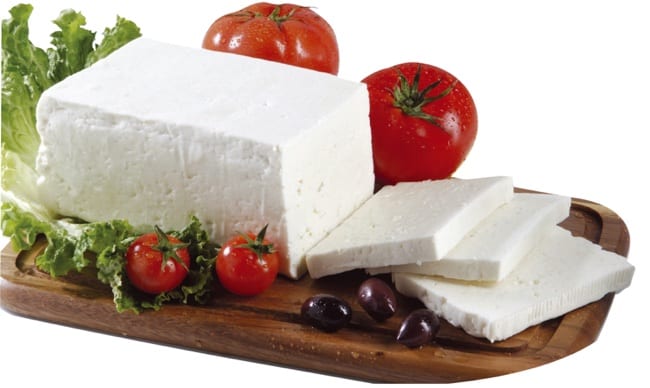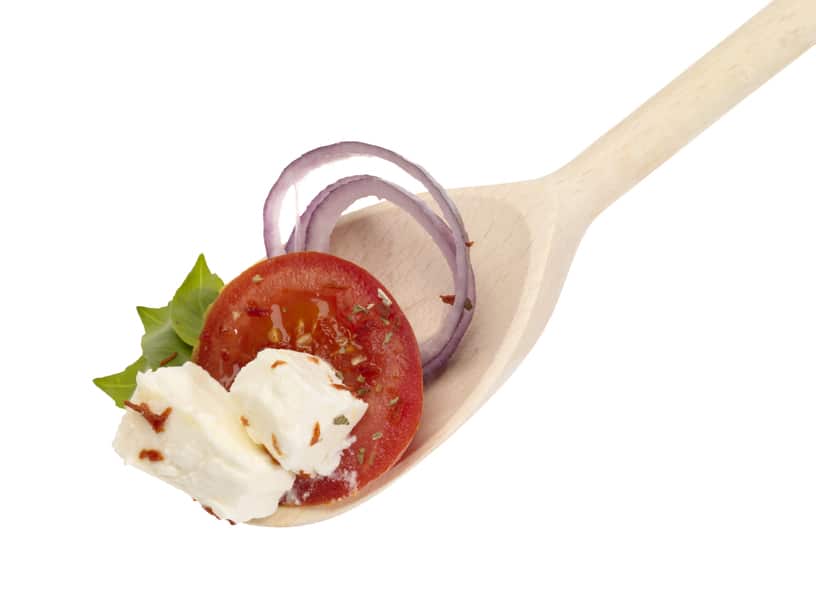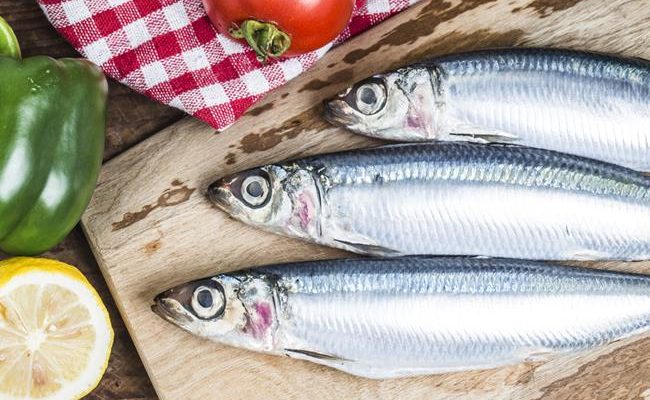
Feta traces its origins back to ancient Greece and may be one of the oldest cheeses in the world according to a cheese making website (1). Feta is traditionally made from sheep and/or goats milk, not cow’s milk like most other cheeses.
However, in present day there is some feta like cheeses made from cow’s milk. Feta has a strong, distinctive flavor and a grainy like texture.
Cheese is a source of saturated fat and can be considered a high calorie food.
Therefore, people watching their weight often avoid or cut down cheese intake.
How much cheese should you eat?
Current guidelines suggest adults should get 3 servings of dairy foods including yogurt, milk or cheese.
While past guidelines advocated for low intake of saturated fat, new research is suggesting saturated fat may not have as critical a role as once thought on increasing heart disease risk (2).
However, before you start piling on the cheese, current guidelines for limiting saturated fat is still recommended until more research is done.
Feta has some health advantages, but it is by no means a perfect food.
If you don’t have an intolerance of allergy for dairy products, eating feta as part of a healthy, balanced diet can be good for you.
Lower calorie and fat option
Feta is one cheese that is on the lower spectrum for calorie content. One ounce of feta provides about 75 calories and 6 grams of fat with 4.2 grams of saturated fat.
These amounts are lower than other cheeses like cheddar or American cheese.
For example, one ounce of cheddar cheese provides about 114 calories and 9.4 grams of fat with 6 grams of saturated fat.
Protein content in feta
Cheese like other dairy products is a source of protein. Cheese can make up an important protein source for lacto vegetarians.
Eating foods higher in protein can help increase satiety at meal times as protein sits in your stomach the longest for digestion.
Eating protein foods at meals can help keep you feeling full and less likely to feel hungry shortly after eating.
While feta is lower in overall calories and fat content compared to some other cheeses, the protein content in feta is also slightly lower compared to other cheeses.
An ounce of feta provides about 4 grams of protein, but an ounce of Swiss cheese can provide 8 grams of protein.
An ounce of cheddar or mozzarella cheese provides about 7 grams of protein.
So, if you are looking for a concentrated protein cheese source, feta isn’t at the top of the list.
However, it is lower in calories and fat content.
Vitamins and minerals in feta
Dairy foods are notorious for being a source of bone building nutrients calcium, vitamin D, magnesium and phosphorus.
According to the National Institute of Health (NIH) (3), many people do not get the daily recommended intake of calcium or vitamin D.
Eating more foods like cheese in your diet can help bump up your calcium intake.
An ounce of feta provides about 14% Daily Value (DV) of calcium.
An ounce of mozzarella, Swiss or cheddar cheese provides about 20% DV.
Feta has slightly more B12 per serving than some cheeses and provides a little less vitamin A compared to some other cheeses.
A potential concern for some people is the sodium content in cheese.
Feta is aged in brine which has a high salt content.
An ounce of feta provides about 13% DV of sodium. Most people eating a typical Western diet get too much sodium from their diet, so limiting foods higher in sodium is recommended.
Getting too much sodium may increase risk for high blood pressure or heart disease (4).
How much should you eat?
The Dairy Council of California (5) states a serving of hard cheese is 1.5 ounce, grated cheese is one third cup and processed cheese is two ounces.
Each of these sizes represents a serving to reach the 3 recommended daily intake of dairy foods.
Eating an ounce to an ounce and a half of feta per day can fit into a healthy meal plan.
Remember, each food group should be eaten in balance, and you should aim to eat a variety of foods. Feta is very flavorful, so a little can go a long way.
Therefore, if you are following a low sodium diet, use a small amount of feta as a flavor enhancer to dishes.
Cut back on adding salt to a dish that already has feta in it.
If you have specific questions if feta is right for you, ask your doctor.
Is feta cheese ok for lactose intolerance?
If you have a lactose allergy or intolerance, you may or may not be able to tolerate cheese.
Everyone is different. Lactose is a carbohydrate specific for dairy, and some people do not any or enough of the enzyme lactase to break down the molecule lactose.
In general, cheeses that have a lower sugar amount on the nutritional label have a lower lactose level.
Harder cheeses like parmesan usually have very low levels of lactose. Fresh, unripe cheeses can have higher levels of lactose.
An ounce of feta has about 1.2 grams of sugar (in this instance it is considered a natural carbohydrate from dairy, not added sugar).
This may or may not be acceptable for people sensitive to dairy.
Conclusion
Feta is generally lower in fat, calories and slightly in protein compared to other cheeses.
An ounce serving provides about 13% DV for sodium, so those watching their salt intake may want to use small amounts of feta to add flavor to dishes.
Feta can be part of a healthy diet when it is eaten in moderation and with a variety of other foods.
Feta, like other cheeses, is a source for the bone building nutrient calcium.











